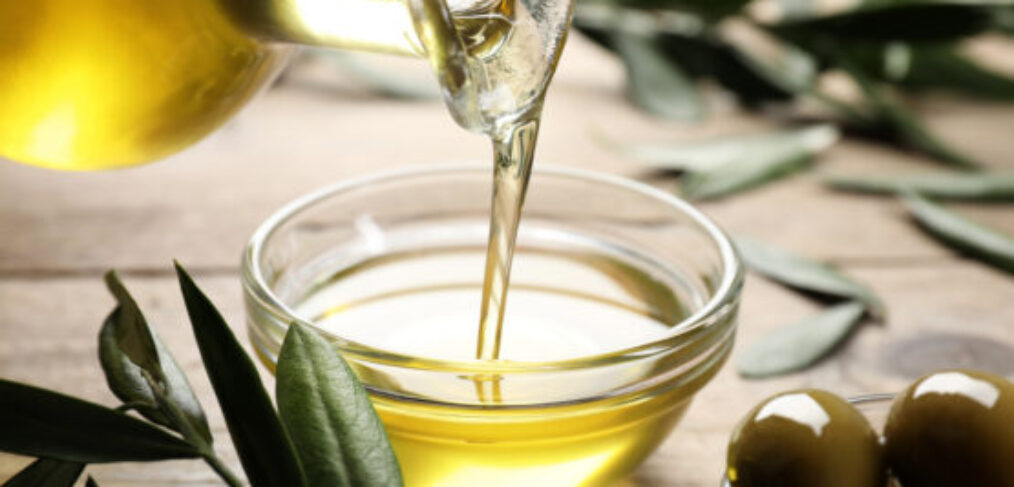Is it Olive Oil?

Olive oil is rich in antioxidants and monounsaturated fats. It has strong anti inflammatory properties and regular consumption of it is associated with many, many health benefits.
It also fits into many of the popular approaches to eating these days, including paleo, vegan, keto and carnivore.
So where the ‘but’?
There isn’t one…until you get into the interesting labeling of bottles of this elixir in a bottle.
Wouldn’t it be nice if you could simply go into your local store, any store, and simply pick up a bottle (in glass) that looked like olive oil, see the words, ‘olive oil;’ written on the label and buy it without ever so much as a doubt about what was inside?
Unfortunately, this is far from the likely scenario these days, unless, of course, you’re buying a bottle of organic, extra virgin directly from the family who grows and presses it themselves at your local farmers market.
A highly publicized 2010 study by the University of California–Davis Olive Center tested supermarket samples and concluded that more than two-thirds of imported oils and 10 percent of California oils labeled “extra virgin” did not meet the legal standard (under law, the extra-virgin designation is determined by a combination of laboratory testing/chemical analysis and sensory testing by an expert taster panel). A follow-up Olive Center supermarket test in 2011 used a larger number of samples for more consistency and found that the five top-selling imported “extra virgin” olive oil brands in the United States failed to meet the basic legal standard 73 percent of the time. Some have suggested that the University favors the domestic olive oil business – which is almost exclusively in California – over imports, and industry trade group the North American Olive Oil Association, which does its own testing of members’ products, disputes the accuracy of UC Davis’ findings (1).
Then, in 2014, Forbes published an article (2) which opened with, “the olive oil in your pantry, the one you bought for its health benefits and for some sliver of the seductive Mediterranean lifestyle, is most likely a scam. A scam, meaning it probably contains less actual olive oil than you’d ever imagine. A scam, meaning it’s likely been mixed with colorants and other less expensive oils like sunflower-seed oil. A scam, meaning you really have not been getting what you paid for.”
A more recent article (3) claims that 80% of the Italian olive oil, specifically, on the market is fraudulent.
Just one more example of why it behooves us to become literal detectives when it comes to attempting to decipher the interesting verbiage which is omnipresent on labels (not just with food, but with personal care products).
So how do we know exactly what we’re getting when we’re presented with what appears to be an abundance of seemingly viable options for purchasing a truly good olive oil?
First off, learn the grades of olive oil to understand not only exactly what you’re getting, but what it’s best used for, such as whether or not it’s best eaten raw and is better not to heat. The USDA’s list of Grades of Olive Oil (4) is a good resource to learn precisely how these classes of olive are graded.
In researching this article, I did not come across verbiage stating that the bottle labeled as olive oil actually contains only olive oil (as a point of comparison, consider that an item that falls under the category of cheese product needs only contain 50 percent cheese to be labeled as such) (5).
Best case scenario: head to your local famers market if you live in area conducive to having a local olive oil producer and buy directly from them. There are approximately 40,000 acres of olives planted exclusively for the production of olive oil in the United States. Olive oil is produced in California, Arizona, Texas, Georgia, Florida, Oregon and Hawaii. The US produces about 5% of all of the olive oil consumed in this country each year (6).
Next best – know what to look for. The American Olive Olive Producers’s Association describes on their site (7) that we should check the front of the label for the grade, and the back for harvest date, best by date and where the olives were grown.
Single-origin olive oil is often of higher quality than blended oils because it is made from a specific variety of olives grown in a specific location. This allows for greater control over the growing conditions, harvest timing, and processing methods, which can result in a superior quality oil (8).
Just as we see in many foods, the smaller the production, the more likely the attention to detail is higher and subsequently, so is the end product.
If you’re curious as to whether or not the oil you already have in your pantry is really olive oil, or not, you can use the ‘Fridge Test’ (9): Pour 2 tablespoons of olive oil in a clean, glass jar, then seal it. Put the jar in your fridge for 24 hours and don’t move it. After the 24 hours has passed, you should be able to tell which state the olive oil is in; if the oil turned into a solid, it’s pure olive oil (because its monounsaturated) while if the oil has remained as a liquid, it’s not pure olive oil; it’s polyunsaturated.
Given that a real olive oil is one of the healthiest fats we can consume regularly, it’s definitely in our best interest to do the digging in order to determine which are our best options!
(1) https://www.forbes.com/sites/larryolmsted/2016/09/30/its-extra-virgin-olive-oil-day-is-your-evoo-real-or-fake/
(2) https://www.forbes.com/sites/cathyhuyghe/2014/03/05/the-scam-of-olive-oil-and-its-antidote/
(3) https://www.forbes.com/sites/ceciliarodriguez/2016/02/10/the-olive-oil-scam-if-80-is-fake-why-do-you-keep-buying-it/?sh=6fd702c0639d
(4) https://www.ams.usda.gov/grades-standards/olive-oil-and-olive-pomace-oil-grades-and-standards
(5) https://www.accessdata.fda.gov/scripts/cdrh/cfdocs/cfcfr/CFRSearch.cfm
(6) + (7) http://www.aoopa.org/olive-oil-101
(8) https://olivoamigo.com/blogs/recipes/the-importance-of-single-origin-olive-oil
(9) https://www.wikihow.com/Test-Olive-Oil





